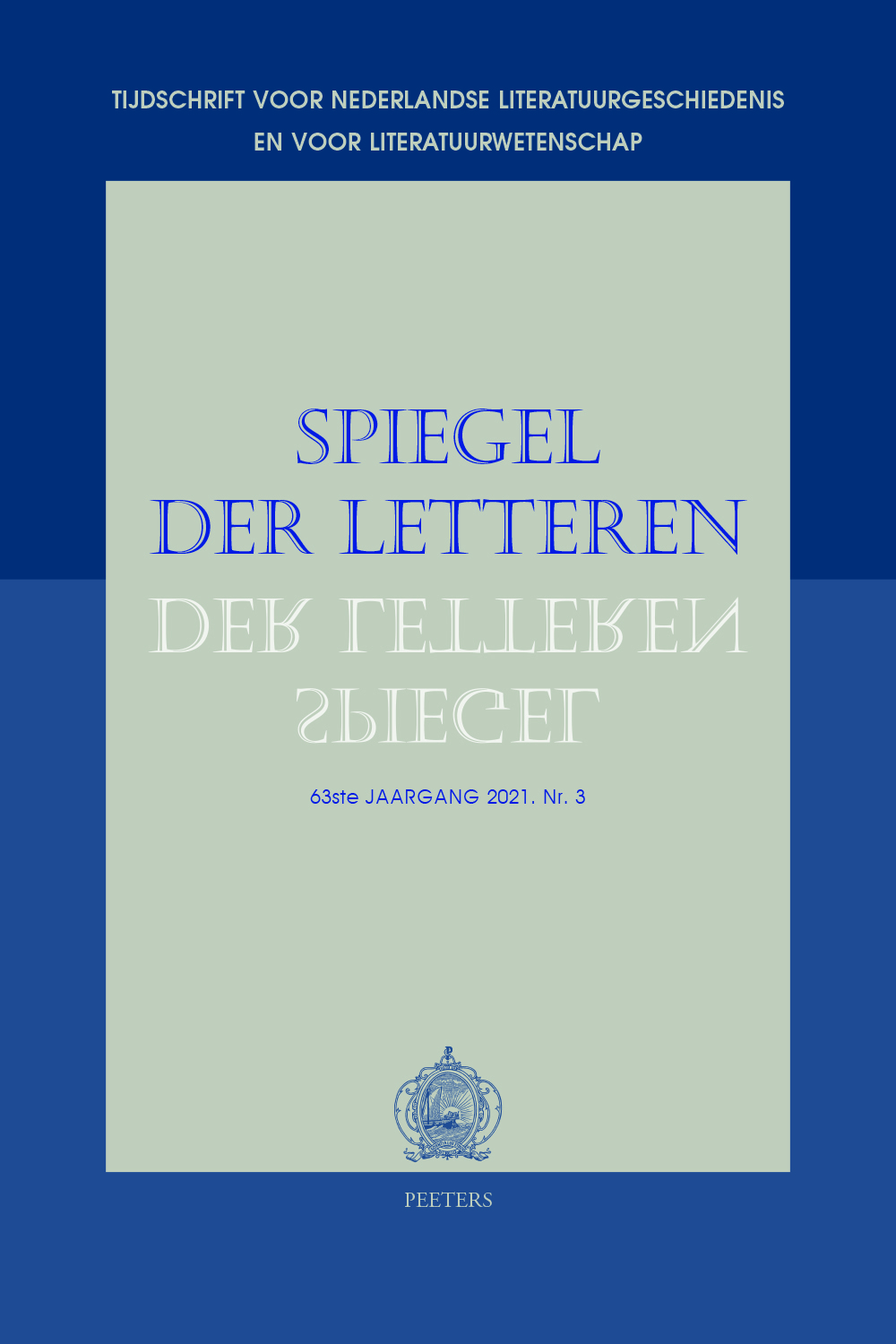 previous article in this issue previous article in this issue | next article in this issue  |

Preview first page |
Document Details : Title: Middelnederlandse wandteksten en grafschriften op rijm Author(s): REYNAERT, Joris Journal: Spiegel der Letteren Volume: 59 Issue: 2-3 Date: 2017 Pages: 171-202 DOI: 10.2143/SDL.59.2.3285103 Abstract : What is left of non-book literature from the medieval Low Countries (before ca. 1500) mainly consists of two categories: funerary inscriptions on the one hand and texts which were conceived to be posted on a wall on the other. This is at least what remains if we ‒ as has been opted for here ‒ exclude non-book phenomena belonging to the private sphere, such as letters of personal interest (which may very well have stylistic qualities, but are not meant for a public literary scene) and text fragments appearing in iconographic references to literary works, in which the text is subservient to the image and secondary to the literary text itself. Extant wall texts, often quite damaged, come from different environments: mainly churches and town halls, but also manors and burgher houses. On the whole, they have a morally dictating purport, sometimes, but rarely, with overtones of social criticism. For obvious reasons, texts on tombstones belong to the devotional register: inviting to remember and pray for the deceased, and to pay tribute to the memento mori warning. They appear in connection with, or are integrated into a life-size representation of the dead person, accompanied by his guardian angel, other angels or one of the deceased’s next of kin. Apart from this combination of poetry and iconographic ornamentation, these tombstones are also analogous to contemporaneous illuminated manuscripts as to their geographical center and social background. Most of the known instances were commissioned by municipal dignitaries from Bruges. |
|


